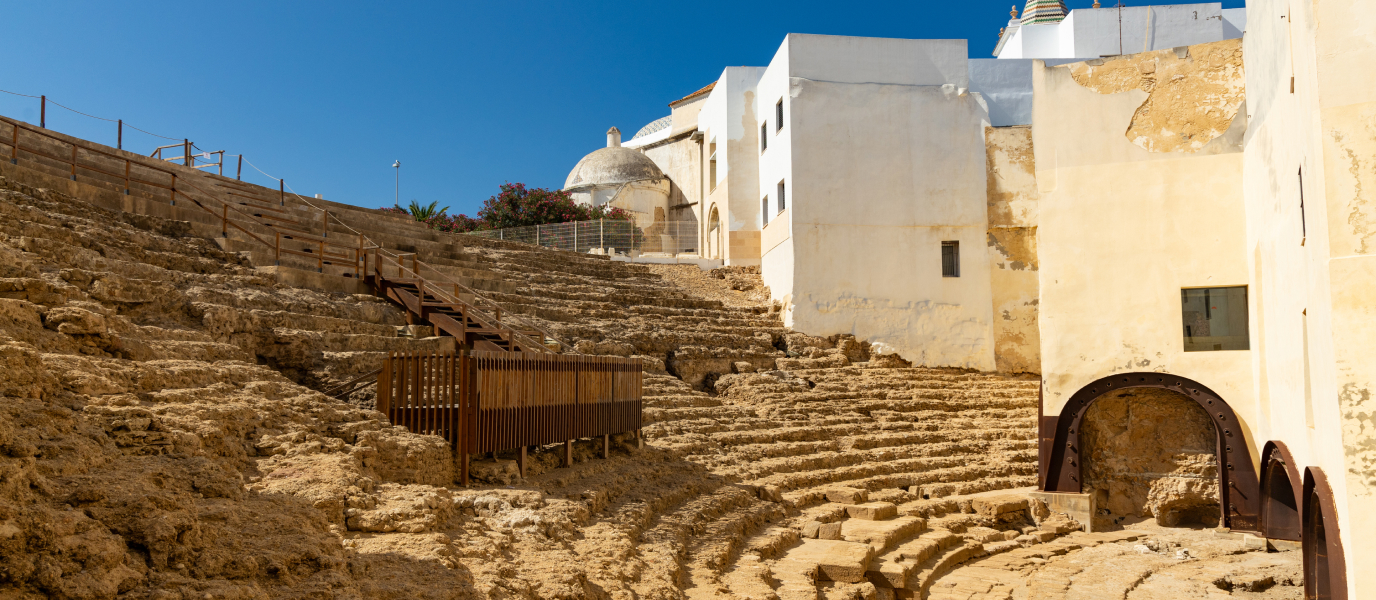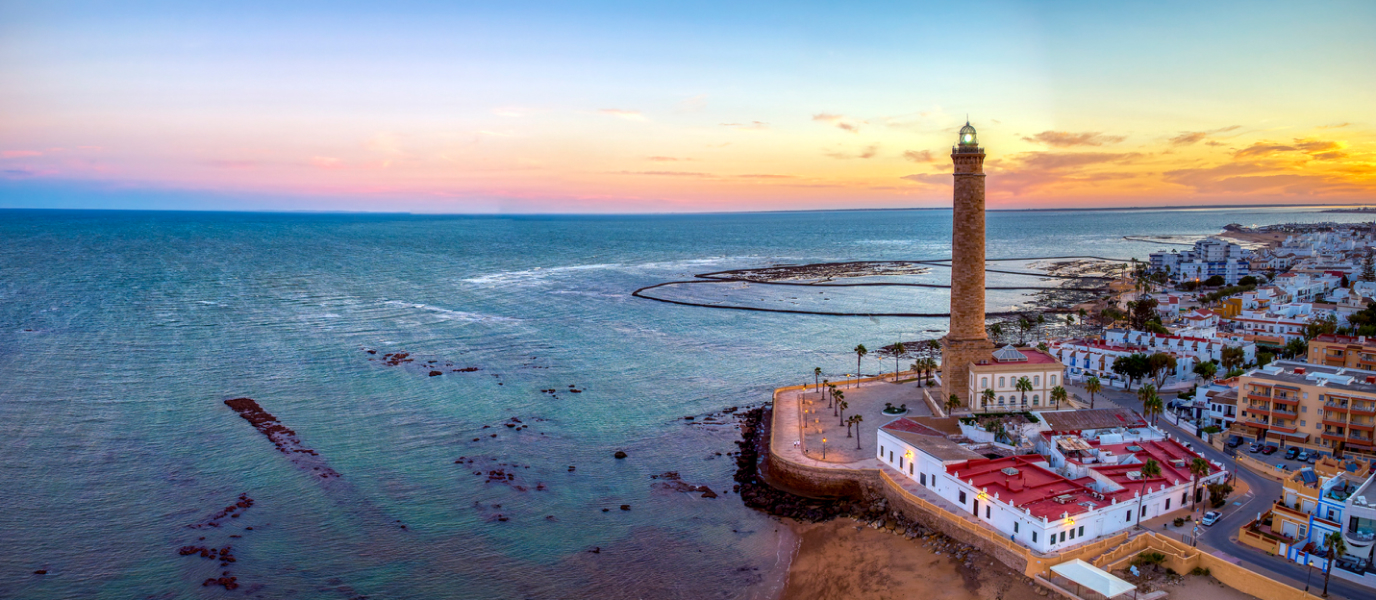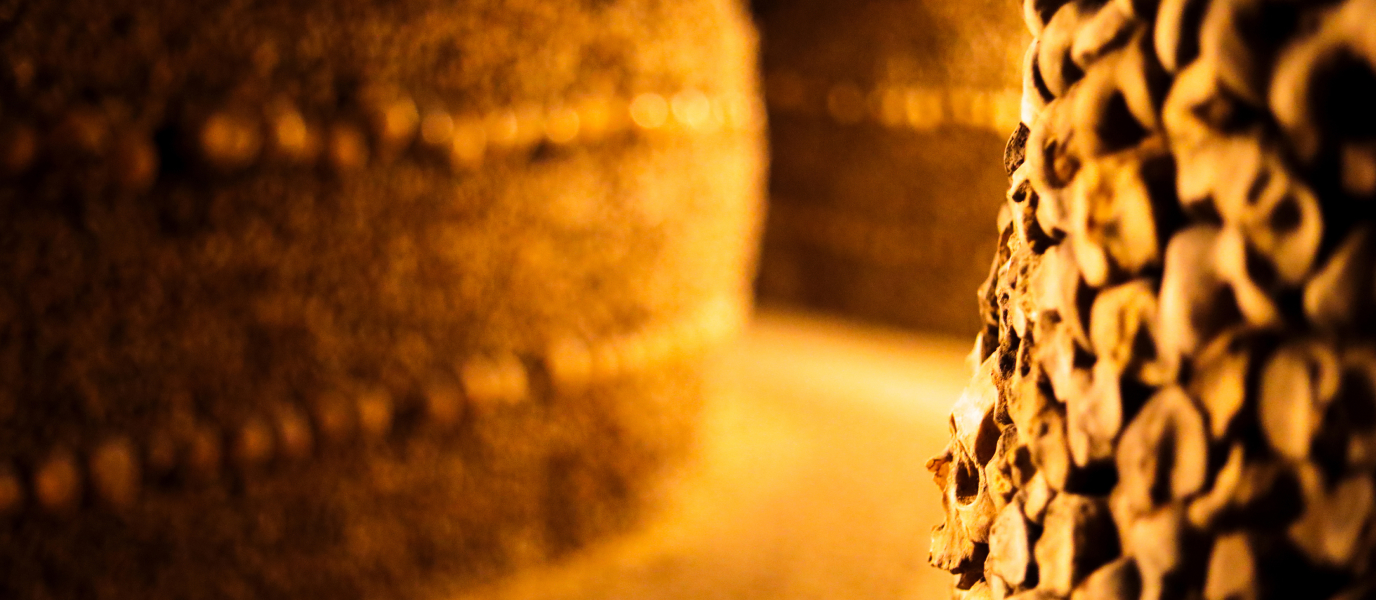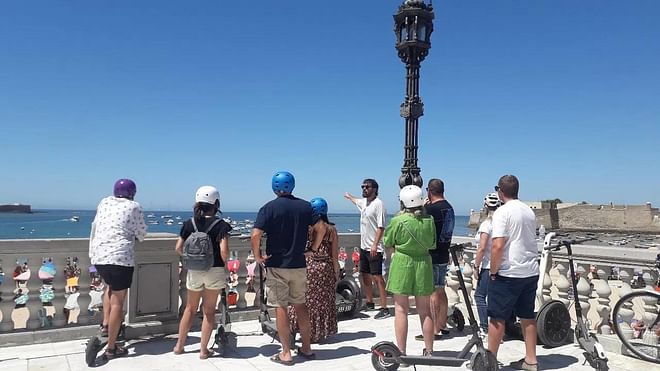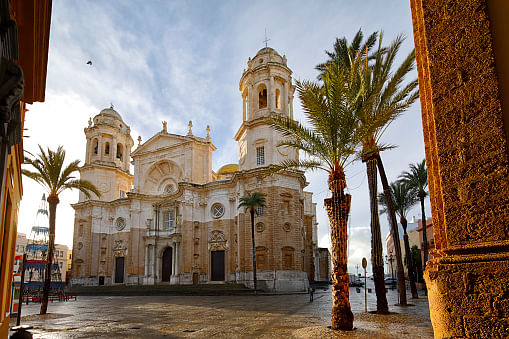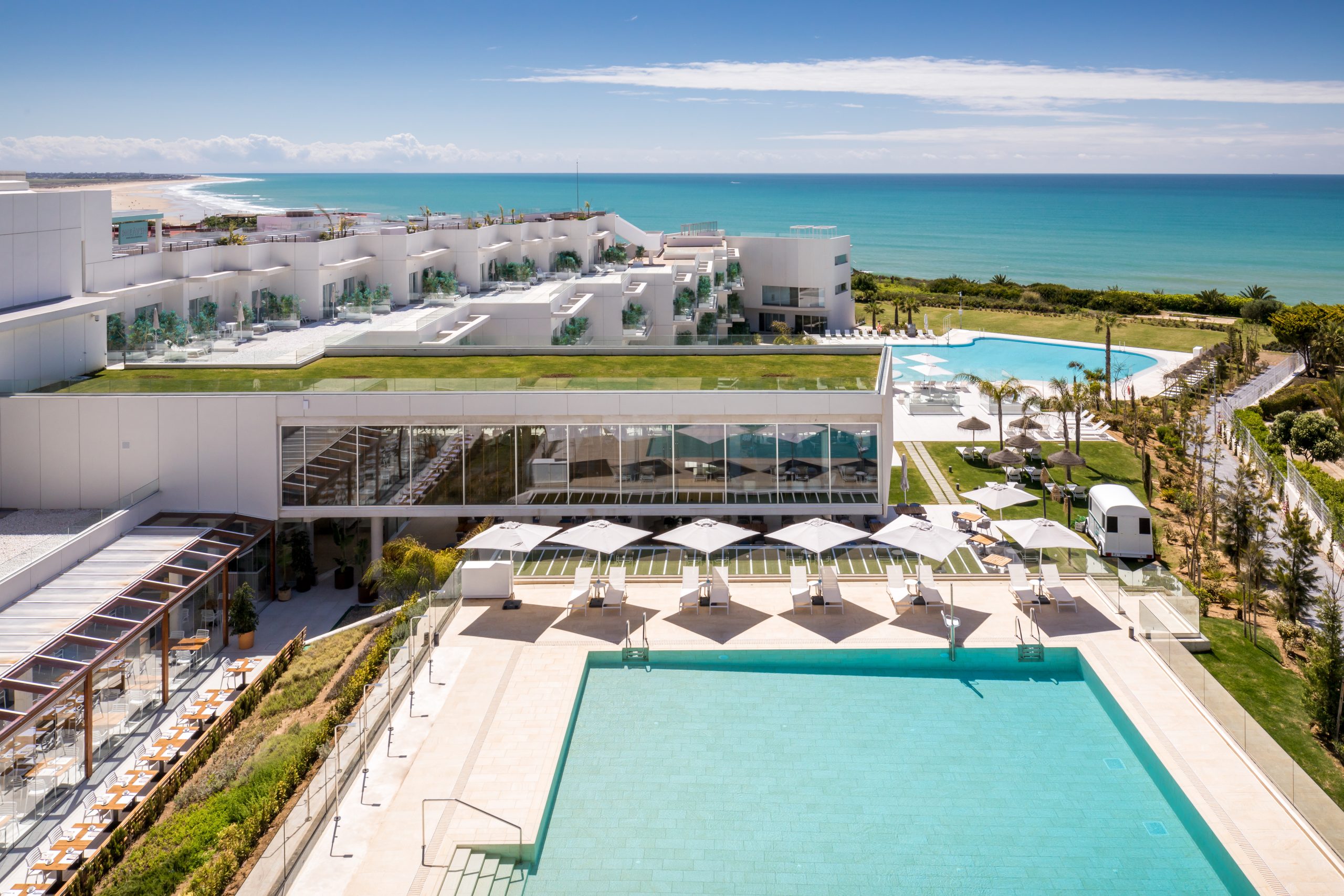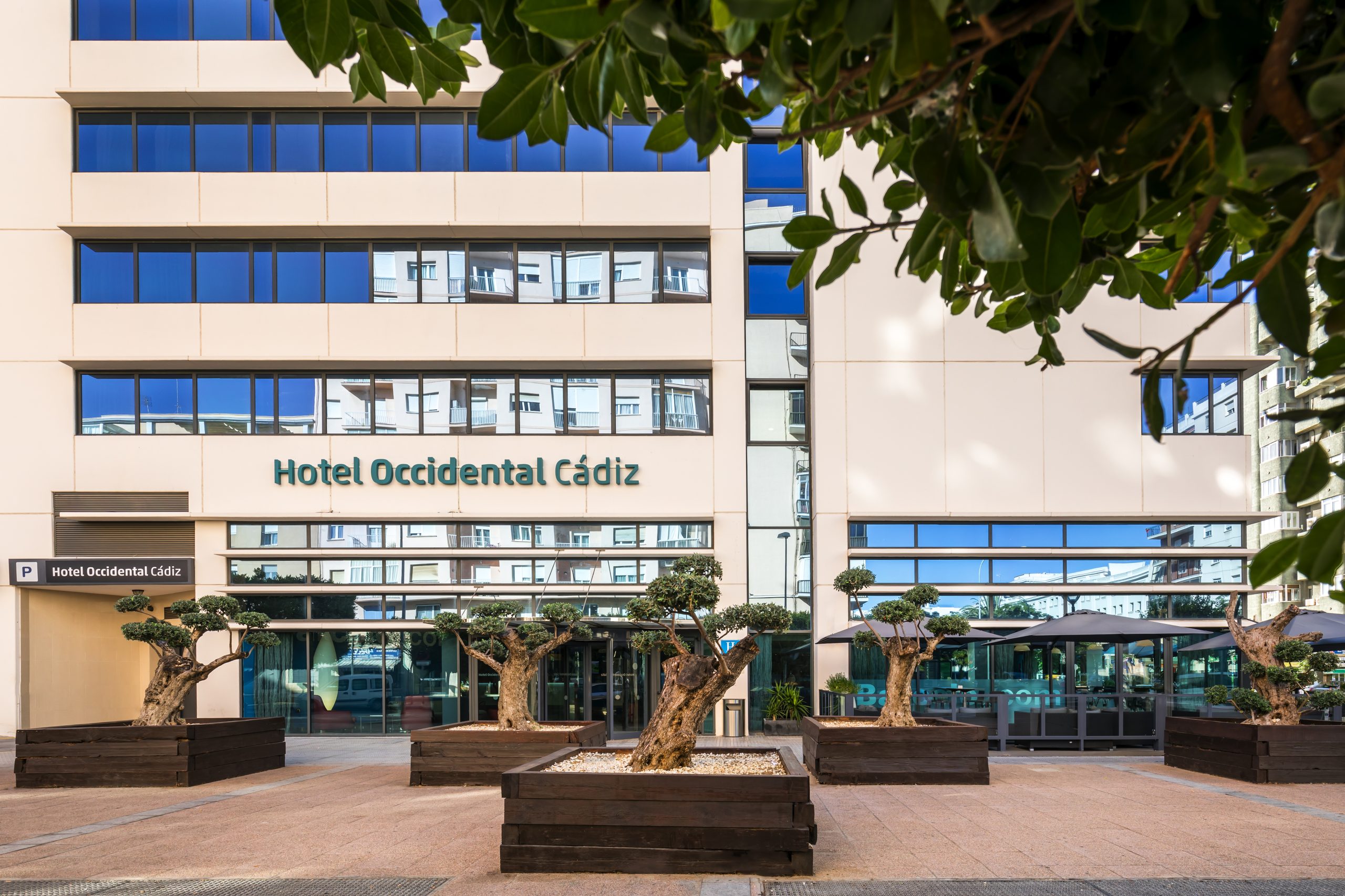Cádiz’s southerly location has made it the object of desire for thousands of years. It has been occupied by the Phoenicians, the Greeks, the Romans and the Moors—the most important civilisations down the centuries, all of whom have left their own indelible stamp on the land. Cádiz’s particular geographical position as an island separated from the continent by the narrow Caño de Sancti Petri canal has given it a unique character. It is the oldest city in Western Europe, and its archaeological remains are one of the most important reasons for getting to know it.
Its strategic location midway between the Mediterranean and the Atlantic Ocean attracted the Phoenicians, who made one of their earliest settlements there. Its status as a trading city reached its full glory during Roman times. Renamed Gades, and handed over unconditionally after the Second Punic War, it achieved the status of a federate city of Rome. Tax exemptions benefited Gades’ economy, and a Roman circus, aqueducts and temples were built. The city became ever more prosperous. One of the finest relics remaining from that booming period is Cádiz’s Roman Theatre. Would you like to find out what awaits you there?
A few facts about Cádiz’s Roman Theatre
One of the advantages of visiting this archaeological site is that it allows us to gain first-hand knowledge about the history of Cádiz. Once there among these remains, it is not difficult to let our imagination fly, and to recreate the performances that took place here. These ruins were discovered by accident during an attempt to excavate the remains of the Castillo de la Villa in 1980. From that moment onwards, arguments have been put forward for restoring the theatre, given its unique characteristics.
It is the second largest theatre built by the Romans in Spain; only the theatre in Córdoba is larger. It is also the oldest known Roman theatre in Spain. It was constructed in around 70 BC, when it was decided to expand the city by adding a new neighbourhood, Neápolis, which would have a theatre and amphitheatre.
This building, a symbol of the great wealth of the Classical period, was abandoned at the end of the third century AD, and then became the target of looters. The structure was reintegrated into the medieval city planned by Alfonso X the Wise. Thus, the Roman Theatre remained buried, and its existence was only known through the writings of authors such as Cicero.
The excavations undertaken in 1980 succeeded in recovering part of the theatre, so it became possible to study the structure’s characteristics and origins. But the most important area of the complex remains to be explored: the stage and the entrance are still buried.
Cádiz’s Roman remains and ruins
Archaeological projects have brought to light a good part of the tiered seating, the orchestra pit and a circular gallery. To this can be added a section of what must be the building housing the stage, which can be seen through viewing panes in the floor of the Interpretation Centre. The Centre provides explanatory display screens, scale models and videos to place the theatre in context for visitors.
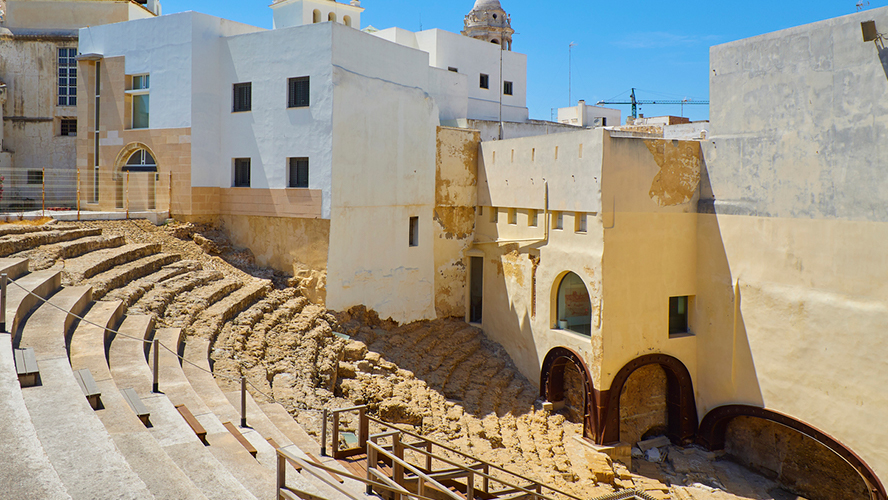
The structure still retains ancient traces of Greek architecture—further evidence of the age of the building. The construction of the tiered seating was made easier thanks to the slope in the ground. The techniques in evidence were based on stonework and external walls built on ashlar blocks.
As one of the most important theatres of its time, it must have been decorated in a style appropriate to the rest of the building. If you want to see the remains of these embellishments, you will need to visit the Museum of Cádiz. In the section dedicated to Archaeology are preserved several pieces of the marble cornice, on which plant motifs can still be seen. In addition, there are the remains of friezes and alabaster columns, mainly the capitals in the Classical style, with scrolling and acanthus leaves. Don’t miss the fragment of sculpture of the male figure also uncovered by the excavations, which is now in safe keeping within the museum.
It is known that the theatre had a capacity for over 10,000 people. As we explore this complex, we can be transported back to the past, and imagine the various dramas that would have been performed here. Located in the very heart of the city’s old quarter, in the neighbourhood of El Pópulo, it constitutes an outstanding example of our rich Roman heritage.
As you are in an area teeming with tourist attractions, you could plan a whole day’s sightseeing during which—in addition to the Roman Theatre mentioned above—you could also have a look at the ancient gates to the medieval city, the church of Santa Cruz and the famous Plaza de San Juan de Dios. In this square stands the Town Hall, as well as a large number of terrace bars and cafés where you can recharge your batteries, sample the typical pescaíto (tiny fried fish), and generally allow yourself to be seduced by Cádiz’s charm and its amazing cultural heritage.







































































